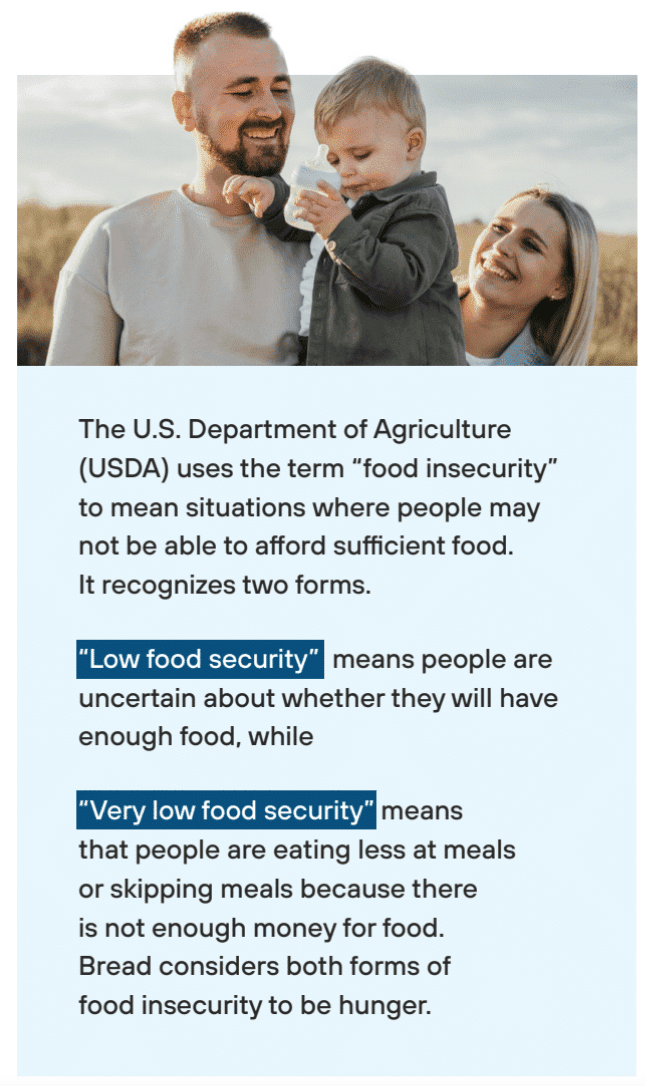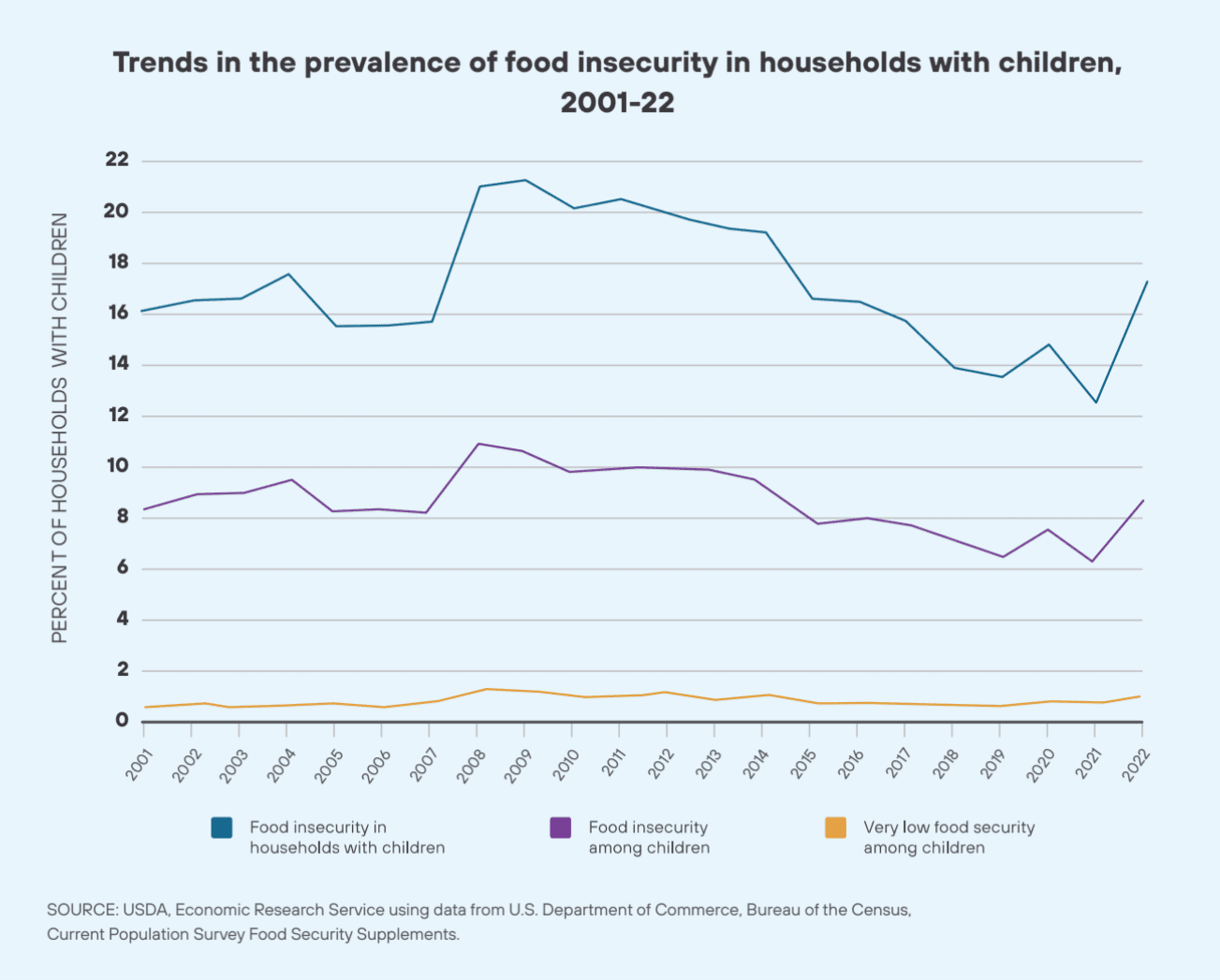Here in the United States, few children are severely malnourished, but many families worry about their next meal or regularly run out of grocery money. Collectively, the world already grows enough food to feed everyone, and the U.S. government has the power and resources to make a historic impact on hunger. That is why Bread and our partners work tirelessly to urge our nation’s decision-makers to prioritize policies and programs that will end hunger.

In 2022, 12.8 percent of all U.S. households were food insecure. This includes 7.7 percent with “low food security” and 5.1 percent with “very low food security.” These increases were largely due to the end of pandemic assistance programs including the expanded Child Tax Credit and increased access and benefits in the Supplemental Nutrition Assistance Program (SNAP) and the Special Supplemental Nutrition Program for Women, Infants, and Children (WIC). Inflation and rising food prices are also contributing factors.
Food insecurity is more common in rural areas. In 2022, it affected 14.7 percent of rural households, or 2.7 million families. Although urban areas have a lower rate of food insecurity, at 12.5 percent, this adds up to a much larger number of families—14.3 million—since urban areas are more populous.
Black and Latino households experienced food insecurity at more than twice the rate of white households in 2022, at 22.4 percent and 20.8 percent, respectively.

Updated February 2024
SOURCE: USDA (2023). Household Food Security in the United States in 2022 (Report No. ERR-325).
https://www.ers.usda.gov/publications/pub-details/?pubid=107702.
In households with very low food security—more than one in 20 U.S. households—there were times during the year that people’s food intake was reduced and their normal eating patterns were disrupted because the household lacked money for food. Of households with very low food security:
- 98 percent worried that their food would run out before they had money to buy more.
- 97 percent found that the food they bought just did not last, and they did not have money to get more.
- 96 percent could not afford to eat balanced meals.
- 96 percent skipped meals or ate less because there was not enough money for food.
- 65 percent had been hungry but did not eat because they could not afford enough food.
- 29 percent did not eat for a whole day because there was not enough money for food.



